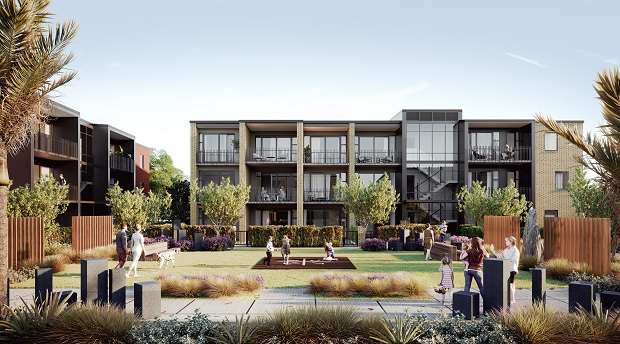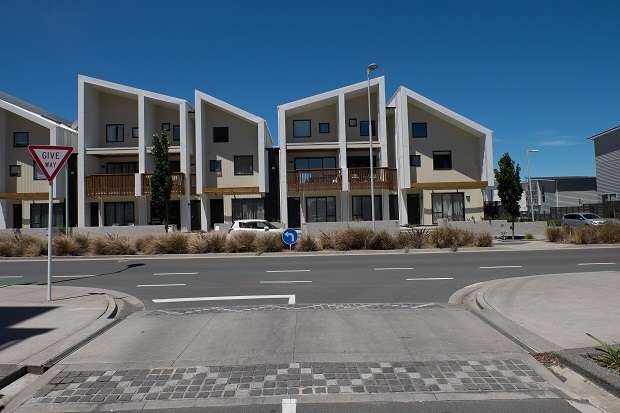Māori have a proverb, ‘ka mua, ka muri’, which describes walking backwards into the future. Kāinga Ora’s Mark Fraser (General Manager Development - Auckland Regeneration) says we can look to the past for a few clues as to how to move forward.- This content was supplied by Kāinga Ora
“Look around the city fringe suburbs such as Parnell and Mt Eden and you’ll see lots of pre-war apartment buildings, known colloquially as flats. If we turn back the clock a hundred years to one of our earlier population booms we responded with apartments and those apartment buildings are still lived in and loved today.”
These flats, which predated the motorways, were built on or near the arterial routes where people could walk to a tram stop or the local shops. Today, it’s not just the fact that the flats are close to the city that makes them so desirable – they are also in walkable neighbourhoods surrounded by amenity.
Today, the middle and outer ring of suburbs where most Aucklanders live shapes our experience of our city – the standalone homes on large sections; the quiet streets with their green berms and occasional passers-by; the views of the maunga and the harbours; and the main arterial roads clogged with traffic.
Start your property search
This picture is set to change in a fairly major way over the next couple of decades as the city responds to the need for more housing.
The Unitary Plan is aimed at guiding the city toward a higher density in a way that makes it more, rather than less, liveable. A key motivation to densify is Aucklanders' love of coast, bush and farmland. Few people want to see our great outdoors swallowed by sprawl, so we need to up the density of our existing suburbs.

New apartments in Northcote are clustered around village greens so that people get to know their neighbours. Photo / supplied
Another huge driver of change in our suburbs is the government’s aim to replace ageing state houses with new warm and dry state homes. The urban development team at Kāinga Ora – Homes and Communities is replacing old state houses across Auckland, as well as adding more affordable and market homes. And these developments are denser in order to use the land more efficiently and bring the cost of housing down. These large-scale developments are already underway in Northcote, Mt Roskill and Mangere.
Kāinga Ora will significantly increase the density of suburban Auckland by building over 40,000 new homes. A big proportion of the homes they build will be apartments, and for good reason. Apartments provide more housing choice to the market, particularly now that the city has a growing number of small households. Thanks to the Unitary Plan, they can be clustered
in places where there is good access to nearby town centres and public transport, making for more walkable neighbourhoods.
Apartments use land more efficiently. That cost saving is reflected in their price, which gives more people the chance to live in desirable suburbs. They’re cheaper to maintain and have lower energy costs than standalone housing, especially older homes.
Kāinga Ora’s urban development arm started life as HLC, the masterplanner of Hobsonville Point. Fraser says that private developers are now catching up with Aucklanders who have been ready to embrace suburban apartments for some time, as long as the product is right, the place is right and the price is right.
Hobsonville Point’s first apartment building in 2013 was a hit with buyers and HLC has continued to ‘test the market’.

Walk up apartments , combining single and double level flats, are very efficient way to bring density to a neighbourhood. Photo / Getty
“A good example is walk-ups,” says Fraser. “They are common in Europe and New York because they use land very efficiently. A ground floor single-level dwelling sits below a separate double-level dwelling on the second and third storeys. In 2015 this was so outlandish to our builder partners that we offered to underwrite construction to get them to take them on. They all sold off the plan.”
Kāinga Ora Urban Development has now taken the knowledge gained at Hobsonville Point and applied it to an existing neighbourhood in Northcote. The first homes in the Northcote development to sell on the open market are apartments in Fraser Avenue, developed by NZ Living. The company has designed 102 apartments in five separate three-storey buildings around a village green. The low-rise, solid block and brick buildings punctuated by big windows are the city-fringe ‘flats’ of the 1920s-40s updated for 2020 living. Two thirds of the new apartments sold off the plan within the first fortnight of being on the market.
Fraser says that, like Northcote, all of the neighbourhoods within Kāinga Ora’s large-scale developments will benefit from new or upgraded infrastructure and amenity. This balancing of higher density with higher amenity is at the core of the Kāinga Ora urban development model evolved at Hobsonville Point.
“Hobsonville Point residents live on a smaller piece of land but they take up more room than people in the post war suburbs,” says Fraser. “By that I mean that they inhabit the whole neighbourhood; they use the parks, the coastal walkway, the waterfront, the local shops. They walk more because everything is close by and they know their neighbours better because everyone lives closer together.”
Whether we’re ready or not, it seems certain that suburban apartments will be coming to a street near you. They are too useful a part of the remedy for Auckland’s growing pains to be left out of the picture. And, if built in high enough numbers, they will make home ownership achievable for a significant portion of Aucklanders who are currently priced out of the market.
- This content was supplied by Kāinga Ora








